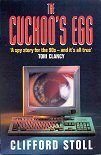 Early technology company Kalpana introduced the first network switch in 1989, the Etherswitch. A networking equipment vendor in Silicon Valley during the 80s and 90s, they developed the concept of a multiport network switch and also created EtherChannel. Kalpana was acquired by Cisco in 1994. Basically just a bridge, the Etherswitch used multiple ports instead of the industry standard two.
Early technology company Kalpana introduced the first network switch in 1989, the Etherswitch. A networking equipment vendor in Silicon Valley during the 80s and 90s, they developed the concept of a multiport network switch and also created EtherChannel. Kalpana was acquired by Cisco in 1994. Basically just a bridge, the Etherswitch used multiple ports instead of the industry standard two.
Dissed by many of the other elite companies at the time, the basic seven port switch offered features found in most modern switches such as low latency, full-duplex, and plug and play operation. It originally sold for $10,500. Although expensive compared to today, it was one-third the cost of Ethernet routers of the day. Cisco, initially only interested in routing, realized it would also need to embrace switching to become dominant in the networking market and eventually bought Kalpana and it’s related technology. Little did anyone realize the impact this technology would have on the world and the internet.



